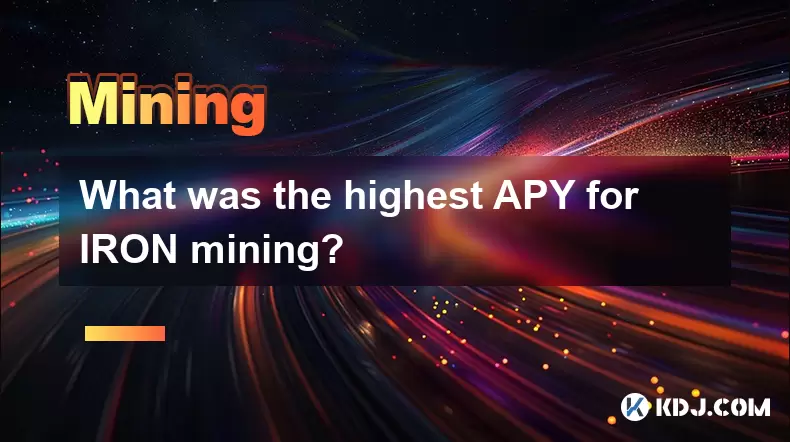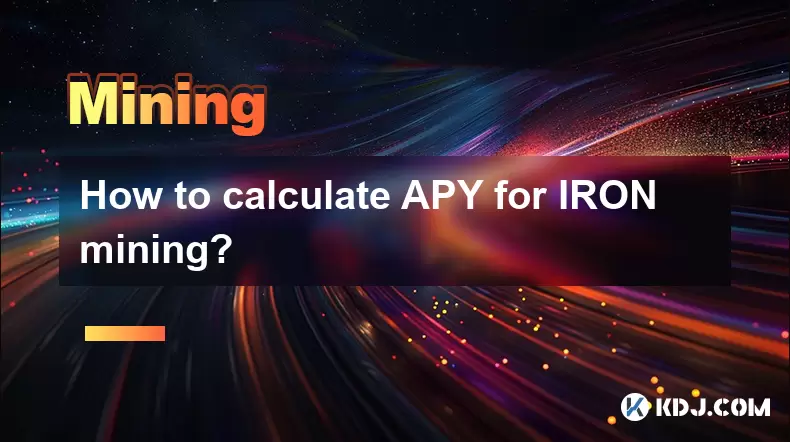-
 Bitcoin
Bitcoin $114200
-0.03% -
 Ethereum
Ethereum $3649
-0.25% -
 XRP
XRP $2.963
-2.31% -
 Tether USDt
Tether USDt $0.9997
-0.02% -
 BNB
BNB $761.0
-0.17% -
 Solana
Solana $164.6
-2.06% -
 USDC
USDC $0.9997
-0.02% -
 TRON
TRON $0.3321
-0.45% -
 Dogecoin
Dogecoin $0.2010
-2.49% -
 Cardano
Cardano $0.7282
-2.60% -
 Hyperliquid
Hyperliquid $37.56
-2.50% -
 Stellar
Stellar $0.3935
-3.18% -
 Sui
Sui $3.440
-1.36% -
 Chainlink
Chainlink $16.49
-1.80% -
 Bitcoin Cash
Bitcoin Cash $558.0
-1.38% -
 Hedera
Hedera $0.2407
-1.49% -
 Avalanche
Avalanche $22.27
-2.29% -
 Ethena USDe
Ethena USDe $1.001
0.00% -
 Litecoin
Litecoin $118.6
-4.00% -
 UNUS SED LEO
UNUS SED LEO $8.995
0.02% -
 Toncoin
Toncoin $3.190
-5.11% -
 Shiba Inu
Shiba Inu $0.00001214
-1.51% -
 Uniswap
Uniswap $9.655
-1.88% -
 Polkadot
Polkadot $3.638
-0.50% -
 Monero
Monero $292.1
-1.82% -
 Dai
Dai $1.000
-0.03% -
 Bitget Token
Bitget Token $4.312
-0.90% -
 Cronos
Cronos $0.1389
-0.32% -
 Pepe
Pepe $0.00001026
-2.44% -
 Aave
Aave $258.2
-1.12%
How can mining income be increased by participating in joint mining?
Joint mining boosts cryptocurrency income via pooled hashing power, resulting in frequent block rewards and reduced operational costs. However, pool selection and payout schemes require careful consideration.
Mar 20, 2025 at 12:22 pm

Key Points:
- Joint mining leverages pooled resources for increased hashing power, leading to more frequent block rewards.
- Reduced operational costs through shared infrastructure and resource management.
- Access to advanced mining strategies and techniques employed by larger mining pools.
- Increased stability and consistency of mining income due to the reduced impact of individual luck.
- Potential for higher returns, but also risks associated with pool selection and payout schemes.
How Can Mining Income Be Increased by Participating in Joint Mining?
Joint mining, also known as pool mining, is a collaborative approach where individual miners combine their hashing power to mine cryptocurrencies together. This strategy significantly increases the chances of solving complex cryptographic puzzles and receiving block rewards, ultimately boosting mining income. Unlike solo mining, where success depends entirely on individual computational power, joint mining distributes rewards among participants proportionally to their contributed hashing power. This shared risk and reward model offers several advantages.
One of the primary ways joint mining increases income is by significantly increasing hashing power. A single miner might take weeks or even months to solve a block, leading to sporadic and unpredictable income. By pooling resources, the collective hashing power becomes exponentially larger, leading to much more frequent block rewards. This consistency is a significant advantage for miners seeking a steadier income stream.
Another key benefit is cost reduction. Maintaining mining operations involves substantial costs, including electricity, hardware maintenance, and cooling systems. Joint mining allows miners to share these costs, leading to a more efficient and profitable operation. Larger pools often negotiate better rates on electricity and hardware, passing these savings on to their members. This shared infrastructure minimizes individual operational burdens.
Joint mining also provides access to sophisticated mining strategies and techniques often unavailable to solo miners. Larger pools employ specialized algorithms and software to optimize mining efficiency, further increasing the chances of finding blocks and maximizing profitability. These strategies might involve techniques like dynamic difficulty adjustment or strategic hash rate allocation, advantages unavailable to individual miners.
The stability of income is another significant advantage. Solo mining is highly susceptible to luck; long periods without a block reward are common. Joint mining significantly reduces this volatility. While the individual rewards might be smaller than a solo block reward, the frequency of rewards is far higher, resulting in a more predictable and stable income stream. This predictability is crucial for budgeting and long-term planning.
However, participating in joint mining also introduces considerations that need careful evaluation. The choice of mining pool is critical. Different pools have different fee structures, payout methods, and levels of transparency. Some pools might have higher fees, reducing the overall profit, while others might have opaque payout systems. Thorough research and due diligence are essential before joining any pool.
Understanding the pool's payout system is vital. Different pools use various methods, including proportional, PPS (Pay Per Share), and PPLNS (Pay Per Last N Shares). Each method has its own advantages and disadvantages concerning risk and reward. Choosing a pool with a payout system that aligns with your risk tolerance and mining strategy is crucial for maximizing your returns. Carefully examine the terms and conditions before committing.
Pool size and reliability are also important factors. Larger pools generally offer greater stability and higher chances of consistent rewards due to their substantial hashing power. However, it's also crucial to choose a reputable pool with a proven track record and transparent operations. Avoid pools with questionable reputations or a history of controversies. Check online reviews and forums for insights from other miners.
Furthermore, the type of cryptocurrency being mined significantly impacts the profitability of joint mining. Some cryptocurrencies have higher block rewards and faster block times than others. This difference can affect the overall profitability of the mining operation. Selecting a cryptocurrency with a favorable reward-to-difficulty ratio is crucial for success. Researching the current market conditions is a prerequisite for profitable mining.
Frequently Asked Questions:
Q: What are the risks involved in joint mining?
A: The primary risks involve choosing an unreliable pool (leading to potential scams or slow payouts), understanding and accepting the pool's fee structure, and the inherent volatility of the cryptocurrency market itself. The value of the mined cryptocurrency can fluctuate, impacting overall profitability.
Q: How do I choose a suitable joint mining pool?
A: Consider factors like pool size, fee structure, payout system (PPS, PPLNS, etc.), server location (for lower latency), transparency, and community reputation. Research and compare multiple pools before making a decision.
Q: Is joint mining always more profitable than solo mining?
A: Not necessarily. While joint mining generally offers more consistent income due to higher frequency of rewards, it also involves pool fees. The profitability depends on the specific pool, the cryptocurrency being mined, and the overall market conditions. Solo mining might be more profitable in specific circumstances with very high hashing power.
Q: What is the role of hashing power in joint mining?
A: Hashing power determines your share of the block rewards. The more hashing power you contribute to the pool, the larger your share of the rewards will be. This directly impacts your overall mining income. Therefore, efficient and powerful hardware is vital.
Q: Can I switch mining pools easily?
A: Yes, you can usually switch pools relatively easily. However, you might need to reconfigure your mining software and consider potential downtime during the transition. It's essential to understand your chosen pool's withdrawal policies before switching.
Disclaimer:info@kdj.com
The information provided is not trading advice. kdj.com does not assume any responsibility for any investments made based on the information provided in this article. Cryptocurrencies are highly volatile and it is highly recommended that you invest with caution after thorough research!
If you believe that the content used on this website infringes your copyright, please contact us immediately (info@kdj.com) and we will delete it promptly.
- Coinbase, Financing, and the Crypto Market: Navigating Choppy Waters in NYC Style
- 2025-08-06 12:50:11
- Bitcoin in Indonesia: Crypto Education and Economic Strategy
- 2025-08-06 12:50:11
- DeriW Mainnet: Zero Gas Fees Revolutionize On-Chain Derivatives Trading
- 2025-08-06 10:30:11
- IOTA, Cloud Mining, and Eco-Friendly Crypto: A New York Investor's Take
- 2025-08-06 10:30:11
- Kaspa (KAS) Price Prediction: August 6 - Will It Break Free?
- 2025-08-06 10:50:12
- Pension Funds, Bitcoin ETFs, and Exposure: A New Era of Institutional Crypto Adoption
- 2025-08-06 12:55:12
Related knowledge

What was the highest APY for IRON mining?
Jul 23,2025 at 05:14am
Understanding IRON Token and Its Mining MechanismThe IRON token is a stablecoin that operates within the Iron Finance ecosystem, primarily on blockcha...

What is impermanent loss in IRON pools?
Jul 23,2025 at 09:00am
Understanding Impermanent Loss in the Context of IRON PoolsImpermanent loss is a phenomenon that affects liquidity providers in decentralized finance ...

How to claim rewards from IRON mining?
Jul 23,2025 at 02:21pm
Understanding IRON Mining and Reward MechanismsIRON Finance operated as a decentralized finance (DeFi) protocol on the Polygon and Binance Smart Chain...

How to claim rewards from IRON mining?
Jul 29,2025 at 05:07am
Understanding IRON Mining and Reward MechanismIRON is a dual-token system designed to stabilize the value of a synthetic asset through a combination o...

IRON mining tutorial for beginners
Jul 27,2025 at 12:01am
What Is IRON and How Does It Work in the Cryptocurrency Ecosystem?IRON is a cryptocurrency token that operates on the Binance Smart Chain (BSC) and is...

How to calculate APY for IRON mining?
Jul 28,2025 at 09:49am
Understanding APY in the Context of IRON Token MiningWhen engaging in IRON token mining within decentralized finance (DeFi) platforms, Annual Percenta...

What was the highest APY for IRON mining?
Jul 23,2025 at 05:14am
Understanding IRON Token and Its Mining MechanismThe IRON token is a stablecoin that operates within the Iron Finance ecosystem, primarily on blockcha...

What is impermanent loss in IRON pools?
Jul 23,2025 at 09:00am
Understanding Impermanent Loss in the Context of IRON PoolsImpermanent loss is a phenomenon that affects liquidity providers in decentralized finance ...

How to claim rewards from IRON mining?
Jul 23,2025 at 02:21pm
Understanding IRON Mining and Reward MechanismsIRON Finance operated as a decentralized finance (DeFi) protocol on the Polygon and Binance Smart Chain...

How to claim rewards from IRON mining?
Jul 29,2025 at 05:07am
Understanding IRON Mining and Reward MechanismIRON is a dual-token system designed to stabilize the value of a synthetic asset through a combination o...

IRON mining tutorial for beginners
Jul 27,2025 at 12:01am
What Is IRON and How Does It Work in the Cryptocurrency Ecosystem?IRON is a cryptocurrency token that operates on the Binance Smart Chain (BSC) and is...

How to calculate APY for IRON mining?
Jul 28,2025 at 09:49am
Understanding APY in the Context of IRON Token MiningWhen engaging in IRON token mining within decentralized finance (DeFi) platforms, Annual Percenta...
See all articles

























































































